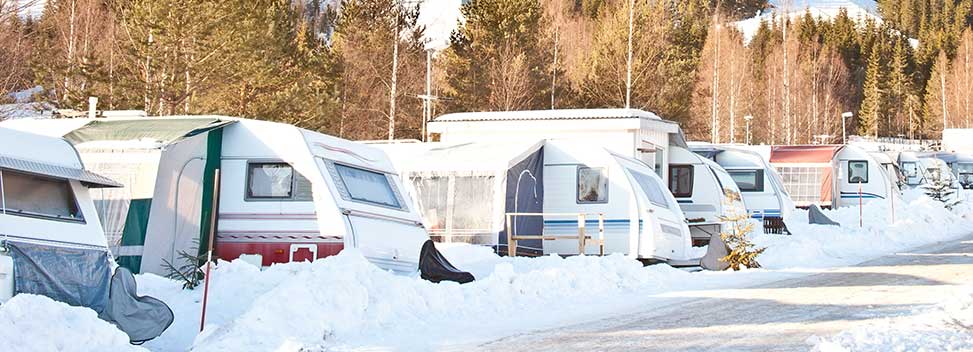If you plan on using your caravan for a cosy winter getaway, you’ll want to ensure it has an efficient heating system to keep you toasty. Most modern caravans are built with materials designed to keep heat in, but you'll likely still need a little extra warmth so you don’t see your breath when it’s time to sleep. Let’s run through all you need to know about heating a caravan and your options.
Caravan heating options
Generally, caravans use one of two heating methods: blown air heating or wet central heating. One works by pumping warm air into the caravan, while the other operates like a central heating system with radiators. Both have advantages and disadvantages, especially in terms of efficiency, heat distribution, and response times.
How does blown air heating work in a caravan?
If you choose a blown air heating method, it’s likely a Truma or Whale system. These generate hot air throughout the caravan, usually from circular vent holes near the floor.
Blown air heating systems can be powered by gas or electricity. In some cases, they use both to speed up heating times, especially in winter. They’re also designed as combi systems, so they’ll simultaneously heat the caravan while heating your water. If one or the other isn’t required, you can heat the air without water and vice versa.
Pros and cons of blown air heating
Blown air heating systems are highly efficient since they work off gas and electricity. As such, you can heat your caravan quickly by boosting your heating with gas. It also means you don’t need to wire your caravan to an electric supply to get heating.
Aside from that, combi-blown air heating systems often add more flexibility and efficiency. You can use a boost function for additional hot water if you run out. You can also reduce temperatures swiftly and set timers for your caravan heating rather than having it on constantly.
But, it does have some drawbacks. Typically, blown air heating is quite expensive to run and creates a fair amount of noise, which can be annoying. You may also find that heat distribution isn’t perfect, with some rooms colder than others. This is because the warm air may not reach those areas effectively, especially the bathroom.
How does wet central heating work in a caravan?
Wet central heating uses radiators spaced around your caravan to heat it, with the most common brand being Alde. It relies on using your electricity to transport hot liquid through the radiator pipes, which is where the ‘wet’ reference comes from.
These radiators are usually dotted around the caravan in every room, similar to your home. Usually, wet central heating systems are combi, so they’ll heat your radiators and hot water simultaneously. As wet central heating systems use pipework to run, they can also be used as towel rails and underfloor heating.
Pros and cons of wet central heating
One of the main advantages of the wet central heating method is that it evenly distributes heat throughout your caravan. As a result, you’ll rarely experience cold patches. It can also be highly cost-effective and is one of the quieter systems.
That said, it can be trickier to use. You have to ensure the fluid levels are correct for radiators to work. There’s also the risk of frozen pipes during winter and leaks, which means maintenance is generally higher than other methods. And, because it relies on pipes and electricity, you won’t have access to your caravan heating without an electric supply. Plus, it can take longer to reduce the temperature than the blown air method, as it’s less responsive.
Caravan heating backup options
Wet central and air-blown systems aren’t your only caravan heating options. You may look for other solutions to keep your caravan warm, such as when your caravan heating isn’t working correctly.
This could include portable gas or electric heaters that you can plug in or attach to a gas bottle to emit heat. While their small size means they can’t heat every room, they can provide enough heat to keep you warm in one area. You should also consider shutting doors and windows to keep warmth in when using these portable heaters.
It’s also worthwhile investing in caravan insurance to help cover costs associated with broken-down heating and protect against many other risks, such as theft and damage. Intasure’s
static caravan insurance helps to protect your caravan from specific risks, including escape of water or oil from any fixed domestic water or heating installation. If your heating system shuts down or your pipes freeze in winter,
caravan insurance could help pay for repair costs.
The sole purpose of this article is to provide guidance on the issues covered. This article is not intended to give legal advice, and, accordingly, it should not be relied upon. It should not be regarded as a comprehensive statement of the law and/or market practice in this area. We make no claims as to the completeness or accuracy of the information contained herein or in the links which were live at the date of publication. You should not act upon (or should refrain from acting upon) information in this publication without first seeking specific legal and/or specialist advice. Arthur J. Gallagher Insurance Brokers Limited trading as Intasure accepts no liability for any inaccuracy, omission or mistake in this publication, nor will we be responsible for any loss which may be suffered as a result of any person relying on the information contained herein
